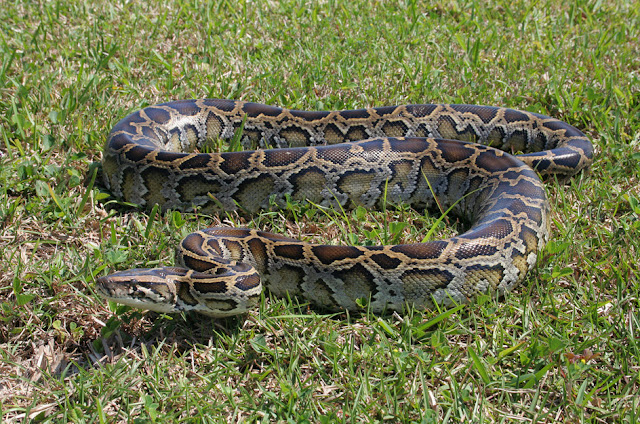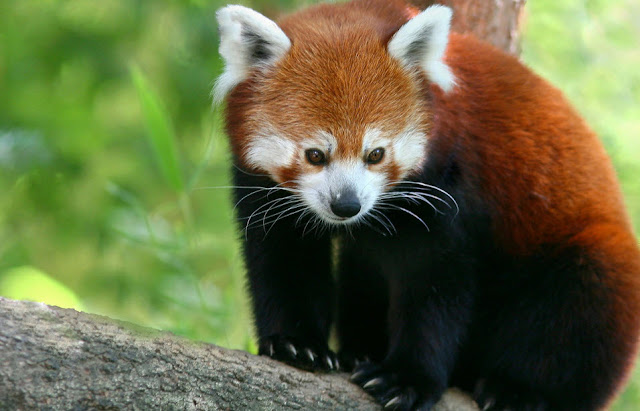The Biggest Animals Kingdom and in The World | Burmese Python | Burmese pythons are dark brown spots with black edge on the back of many snakes. The trend is the same color, but different in its current African Rock Python (Python sebae), sometimes resulting in confusion of the two species outside their natural habitat. In the wild, Burmese pythons reach 3.7 meters (12 feet) on average, while specimens of more than 4 meters (13 feet) are rare. In general, people of more than 5 meters are rare. The maximum record length Burmese Python is owned by a woman named "Baby," who lived in Serpent Safari in Gurnee, Illinois, 27 years. Bali reach an average length of 2 meters (6.6 feet) and Sulawesi up to 2.5 meters (8.2 feet). The Burmese python is found throughout the south and south-east of East Asia, such as India, Nepal, Bhutan West, Southeast Bangladesh, Myanmar, Thailand, Laos, Cambodia, Vietnam northern peninsular Malaysia, far south of China ( Fujian, Jiangxi, Guangdong, Hainan, Guangxi and Yunnan), Hong Kong and Indonesia Java, South Sulawesi, Bali and Sumbawa. Burmese pythons have also been reported Kinmen, near China, but the territory of Taiwan, Burmese Python belongs to the flora of Taiwan in Taiwan refers to the Republic of China, but not in Taiwan.
The python is an excellent swimmer and needs a permanent source of water. Burmese pythons are inhabitants of tropical forests, especially at night. Burmese pythons spend most of their time hidden in the underbrush. Winter Rest is biologically distinct from hibernation. Controversy exists whether the Burmese subspecies can brumate. Burmese Pythons breed in the spring, with females laying clutches which are an average of 12-36 eggs in March or April. Once the children use their egg tooth to leave their eggs, no other maternal care. Like all snakes, Burmese pythons are carnivores. Their diet consists mainly of birds and mammals of sufficient size. The snake uses its sharp teeth pointing to seize its prey, then wraps its body around the prey, while the muscles, killing the prey by constriction. Burmese pythons are often sold as pets, and was famous for its color and nature seemingly tolerant. However, these animals have a rapid growth, and often exceed 2.1 meters (7 feet) in length in a year if cared for and well fed.
Moreover, consuming large amounts of food, and for their size, require large, often custom, safety cabinets, which can be very expensive. A problem with the secondary energy Burmese pythons is that many owners believe if a snake is hungry fed. As Burmese pythons are opportunistic feeders, they will eat almost any food when offered, and often act hungry even after eating recently. A three-meter long Burmese python can easily kill a child [and five meters (about 16.5 feet) Burmese python is certainly capable of hitting and killing an adult.
Find The Biggest Animals Kingdom and in The World



























































